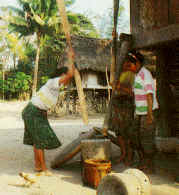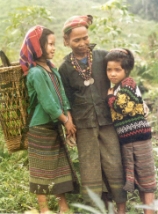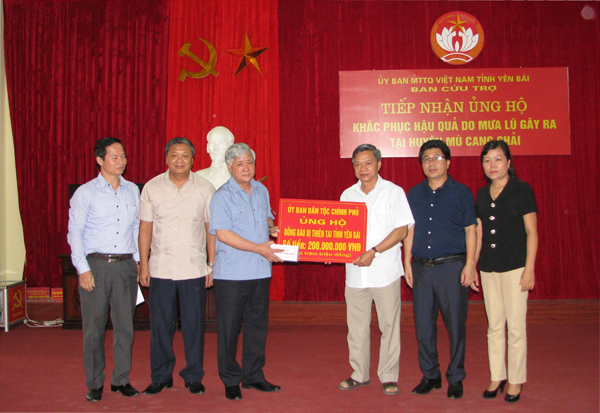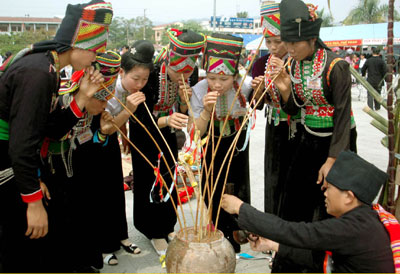The Bru-Van Kieu live mainly on rice cultivation of burntover land and in submerged fields. Hunting, gathering and fishing supplement an important source of food. They rear cattle and poultry firstly for religious sacrifices, then for their meals. Basketry and palm mat-making are their sideline occupations.
The Bru-Van Kieu live in small houses on stilts, which are appropriate to a family including the father, the mother and unmarried children. In a village near the rivers or streams, the houses are always arranged along the current. In flat and extended terrain, the houses are arranged in more or less regular circles around a communal house. Nowadays, in certain places, they have built houses level with the ground.
The village chief plays an important role and enjoys high prestige of the villagers. Many Bru-Van Kieu family lineages preserve tales retracing the origin of their ancestors and retain certain taboos.
Ancestor worship is the most important religious activity among the Bru-Van Kieu. They also have veneration of sacred objects such as a sword and a fragment of a bowl. In their concepts of animism, the Bru-Van Kieu worship the genie of the mountain, that of the earth, and the tree and especially the worship of the fire and the kitchener.Young Bru-Van Kieu man and woman are free to choose their partners. The parents have respect for their children's choice. It is customary that at the wedding, the family of the groom hand to that of the bride a sword. When the bride was brought to her husband's house she has to go through complicated rites including preparing cooking, washing her feet and having dinner together with her husband. The maternal uncle says the last words to the marriage or burial of his nephews and nieces and has a decision in housing construction.
The Bru-Van Kieu love arts and preserve a rich treasury of traditional arts and culture. Musical instruments are numerous: drums, castanets, knob gongs, wind instruments (including aman, ta-riem, kho-lui and pi) and string zithers (including a-chung and po-kua). Folk singing is popular, particularly cha chap (sung stories) and sim, alternative chants between young men and women. Folksongs, proverbs and old tales are quite rich.






